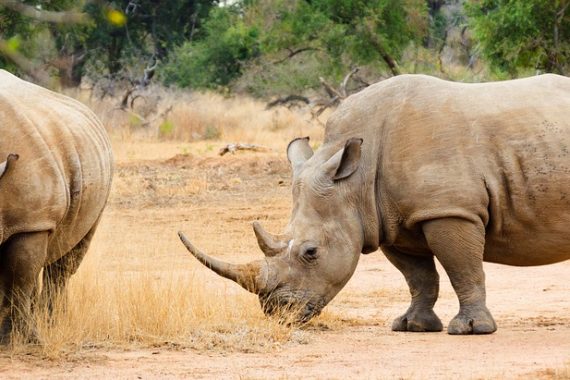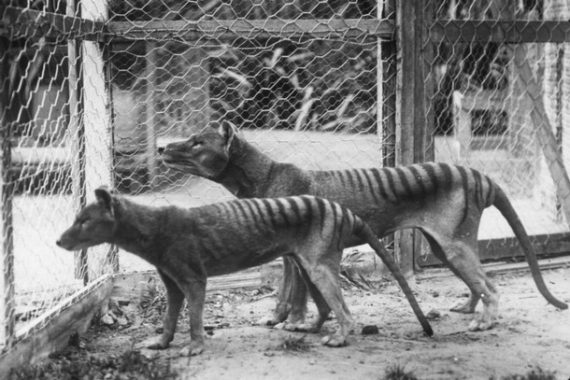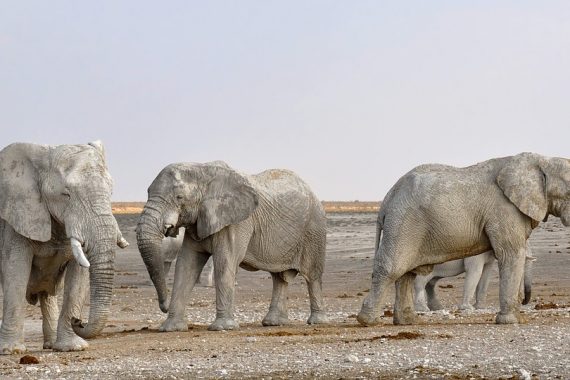
Endemic to North America, the Red Wolf is one of the regions most endangered mammals. With a population of less than 50 animals in the wilds of North Carolina, and just over 200 under human care, the Red Wolf is facing extinction. The United States has an opportunity to save this species but the reintroduction and care of the Red Wolf has raised some controversy. Mainly, the debate some have is if the Red Wolf (Canus rufus) is in fact its own species or a hybrid of the Grey Wolf (Canus lupus) and Coyote (Canus latrans).
Red Wolf Origins
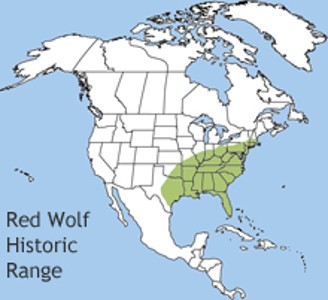
The current debate on the Red Wolf is some argue that it is just a recent hybridization of the Coyote and Grey Wolf. With the removal of top predators throughout North America, particularly in the lower 48 United States, Coyotes have flourished, whereas many species of wolves have diminished. Thus, some believe remnant populations of wolves bred with coyotes in the last one to two centuries and resulted in the Red Wolf. In fact, almost 99% of the papers published and sceintific research conducted states Red Wolves are in fact their own species and a few loud voices are latching on to flimsy evidence.
The proof is in the genetics. Some of the best evidence lies in the evaluation of maternal DNA, which roughly has a mutation rate of 1 genetic change every 100,000 years. Thus, scientists can track the lineage of many animals. Many studies have examined maternal DNA patterns in many canids to include Red Wolves and Coyotes:
Mitochondrial DNA Variation in Southeastern Pre-Columbian Canids
- The authors summarized in 2016, “Based on our results, red wolves may represent an evolutionary unit of conservation value, either as an ancient hybrid or as a unique lineage.” Ancient, meaning hundreds of thousands of years ago, not less than 200 years as some suggest.
- The authors summarized in 2010, “We suggest that both the red wolf and the eastern Canadian wolf evolved in North America sharing a common lineage with the coyote until 150,000 to 300,000 years ago.”
There are earlier studies finding similar results. Further studies have gone on to complicate the issue. In 2017, a study published in Science stated the Red Wolf was in fact the result of ‘recent’ hybridization of the Coyote and Grey Wolf:
- The authors concluded, “We find little evidence of distinct genomic elements in either red or Great Lakes region wolves that would support separate evolutionary legacies.” Suggesting that red wolves were remnants of grey wolves and coyotes breeding together, very recently in the geological record (last 200 years).
Now, there are many points to make about this article. First, one study never leads to a solid conclusion in science. There are many reasons for this, but in science results must be repeated over and over before any conclusions can be definitely made. Second, debate in science is healthy and encouraged. If we are as a species are to overcome the many obstacles we find in the modern world, we need debate and differing opinions to form a solid consensus on any subject. Finally, whole-genome approaches are very powerful and can tell us much about ancestry but are incredibly costly and time consuming. In this particular study there appeared to be many problems with the approaches the scientists took in conducting their study. In a rebuttal, other geneticists point out the flaws to the study:
- These authors stated,” In contrast to their (vonHoldt et al.) conclusions, we argue that their data do not support “a lack of unique ancestry in red and eastern wolves”; rather, evidence still supports the conclusion that red and eastern wolves represent genetically distinct taxa among North America canids.”
- In their commentary the authors pointed out many flaws in the study, most importantly that the wolves they used for the genetic analysis were not a proper representation of the populations they were studying. Thus, if their approaches to the study were flawed, their results are flawed and their conclusions should be heavily scrutinized. Specifically, genetic testing of only two animals from a known population to have hybridized in the past leads to many questions.
- In total, the rebuttal paper is appropriate in their constructive criticism of the vonHoldt et al. paper. Again, this is normal in science and scientific debate.
This is critical to understand as the United States is today forming policies deciding the fate of the Red Wolf. If officials believe the Red Wolf is nothing more than a recent hybrid of Coyotes and Grey Wolves, as some loud voices in North Carolina would have you believe, then the Red Wolf will most likely lose its protection under the Endangered Species Act (US) and will go extinct once again in the wild.

Red Wolf Facts
- Red wolves live only 6 to 7 years in the wild; may live to 15 under human care
- Red wolves are smaller and thinner than Grey wolves
- 53 to 63 inches long (136-160 cm)
- Weigh 50 to 85 lb (23 to 39 kg)
- Hunt mainly smaller mammals (rabbits, racoons, rodents, reptiles) and sometimes smaller deer
- Can eat up to 5 lb (10 kg) per day; usually does not eat every day but will hunt and gorge themselves
- Incredible social structures within a pack; alpha male and female are only ones to mate
- Pups only have a 50% survival rate in the wild
- Females only have one cycler per year (monoestrous), with gestation up to 63 days long
- Wolves use howling and other vocalizations to communicate with pack members
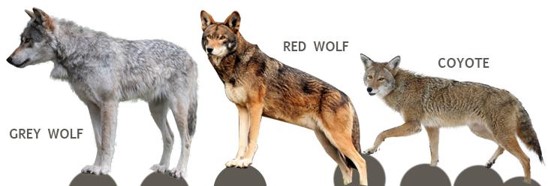
Red Wolf Conservation
There are less than 50 Red Wolves left in the wild in North Carolina, with another 200 held under human care at zoos and conservation centers within the United States.
With the current debate within the United States it is difficult to assess the long-term prognosis with Red Wolves. Recent reports indicate these animals are heading to extinction in the wild rapidly. While these animals went extinct in the wild previously, thanks to work by zoos and conservation centers they were reintroduced in 1987.
Here is an excellent summary on how the effort to save Red Wolves is failing. The question is, does the United States have the political will to save these animals despite being the wealthiest nation on Earth. Only time will tell.
If you reside in the United States we urge you to contact your representatives to voice your support for Red Wolf conservation and support of the Endangered Species Act. You can also support the organizations we list below to help voice your opinion.
Red Wolf Organizations to Support
Endangered Wolf Center (also includes webcams)
Video/Audio Links
Howlception (chain of dogs howling)
Images
Red Wolf Headshot by Valerie (Flickr) CC 2.0
Red Wolf Running by Jim Liestman (Flickr) CC 2.0

